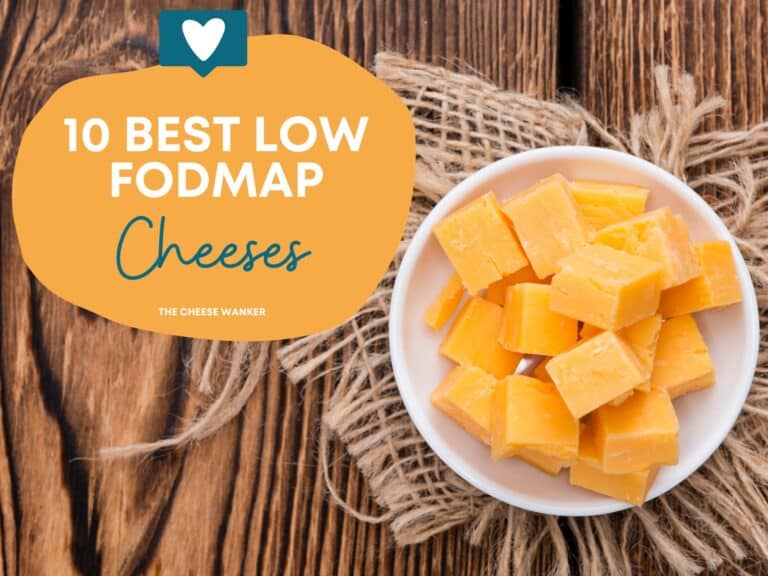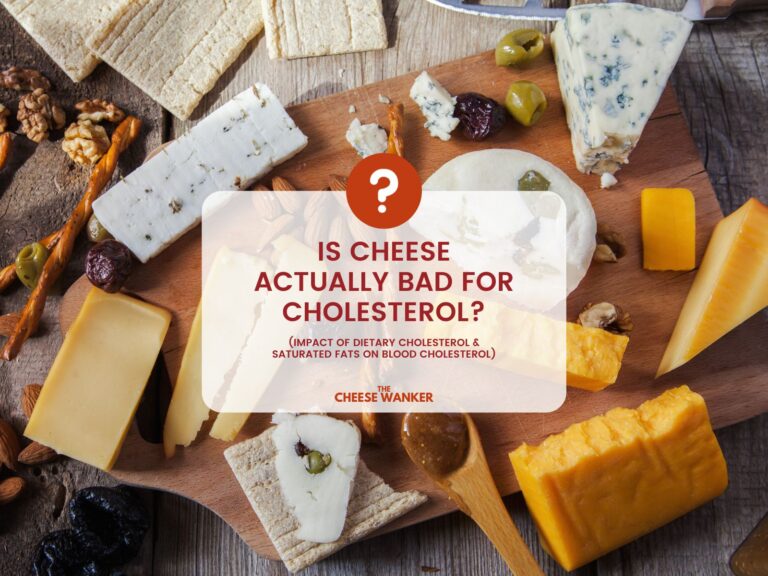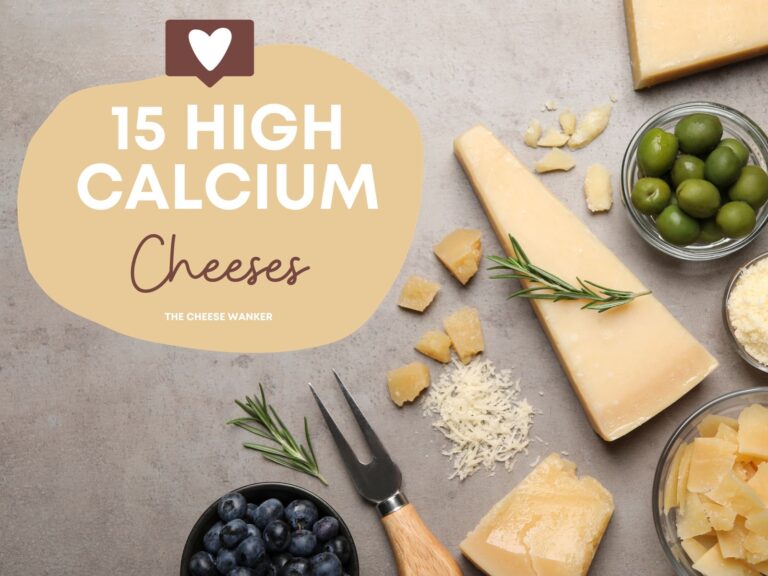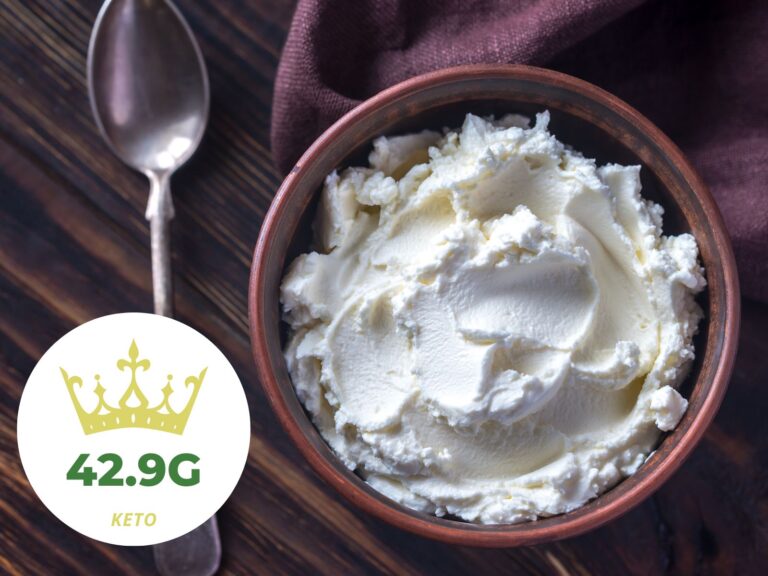People who suffer from gout must manage their diet carefully, as certain foods can exacerbate gout attacks. Among the foods that have garnered attention in the past, cheese remains a subject of concern. In this blog post, we delve into the relationship between cheese and gout, focusing on purine levels, nutritional composition and maturation methods. Is cheese actually bad for gout? Read on to find out.

SEE MORE: What are the healthiest types of cheeses based on nutritional facts? →
What is gout?
Gout is a type of arthritis primarily caused by an accumulation of uric acid (hyperuricaemia) in the bloodstream. Uric acid forms when the body breaks down purines, which are natural compounds found in certain foods and body tissues. We’ll get back to purines a little bit later.
When the level of uric acid exceeds the body’s ability to eliminate it efficiently, it crystallises, leading to inflammation and intense pain in the joints. While this most commonly affects the big toe, it can also extend to other joints such as the ankles, knees, fingers, wrists and elbows.
Who is likely to suffer from gout?
People who are predisposed to gout often share certain characteristics or risk factors that make them more susceptible to developing the condition. These factors include gender, age, family history, diet and lifestyle.
Indeed, men over 30 are statistically more likely to suffer from gout. And people from certain ethnic backgrounds are also at a higher risk of hyperuricaemia and gout.
What are purines and why are they bad for gout?
Before we can answer the question “Is cheese bad for gout?”, we need to understand the connection between purines and cheese.
Purines are naturally occurring compounds found in various foods and are essential building blocks of DNA and RNA. And the purines found in our bodies can be divided into endogenous and exogenous purines.
Endogenous purines
In the human body, about two thirds of our purines are endogenous. This means that our body produces them and is usually quite effective at processing them.
When the body breaks down purines, one of the by-products is uric acid. Under normal circumstances, the body processes and excretes uric acid efficiently through the kidneys.
However, in some individuals, there may be an imbalance in the production and elimination of uric acid, leading to its accumulation in the bloodstream. As a result, high levels of uric acid can accelerate the formation of urate crystals, which may deposit in the joints and surrounding tissues, leading to gout.
Exogenous purines
In addition to endogenous purines, about one third of the purines found in the human body are exogenous. As the name indicates, these types of purines enter the body via food that we consume. Of course, this is the type of purines that we can control with our dietary intake.
Types of foods that people with gout should avoid
Managing one’s gout risk factors involves a multi-faceted approach. While purines are highly relevant to hyperuricaemia, there are also some other aspects to consider. Let’s have a look at all of them.
High-purine foods
A multitude of foods contain purines, and understanding which ones to avoid or consume in moderation is essential for managing gout.
Therefore, people with gout or a predisposition to gout are often advised to moderate their intake of purine-rich foods. As a matter of fact, it is recommended that people with gout should keep their daily purine consumption below 400 mg.
Organ meats, such as liver and kidney, are notorious for their high purine content. Actually, they can contain between 400 mg and 2500 mg of purines per 100 g serving.
Moreover, certain seafoods like sardines, anchovies and mackerel contain between 100 mg and 400 mg of purines per 100 g of fish.
Finally, alcoholic beverages have been linked to elevated uric acid levels and gout flare-ups. On average, a pint of beer (weighing about 450 g) contains around 50 mg of purines. But, of course, this can vary significantly depending on the type of beer.
Foods with a high sugar content
High-sugar foods, particularly those containing high-fructose corn syrup, have been linked to an increased risk of gout due to their impact on uric acid metabolism in the body.
It’s essential for individuals with gout or those prone to developing the condition to be mindful of their sugar intake. Sources include sugary drinks, sweets and processed foods containing high-fructose corn syrup.
High-fat foods
There is also a fair amount of evidence suggesting that an increased saturated fat intake can promote purine metabolism in the body.
To reduce the risk of gout and manage the condition effectively, it’s advisable to limit the intake of foods high in saturated fats. Some examples include fatty meats, full-fat cheeses, butter and certain processed foods.
High-protein foods
An increased dietary intake of proteins can also induce purine synthesis in the human body. Recent studies have shown that this is more of an issue with animal protein than plant protein.
Indeed, there is some evidence that dairy products including cheese may actually be associated with a reduced risk of gout in some people. Hence, meat protein seems to be more of concern than milk and milk-derived products.
Which cheeses should people with gout avoid?
Compared to organ meats and seafood, cheese contains much lower levels of purine. However, some people with gout can be extra sensitive to purine levels. Hence, some cheeses can still be an issue.
When it comes to purine levels in cheese, there are three main contributing factors: age, fat content and maturation techniques.
Long maturation cheeses
During the ageing of cheese, enzymes and bacteria break down the nucleic acids into their components, including purines. Hence, aged cheeses such as Cheddar, Parmigiano Reggiano and Comté usually contain higher levels of purine.
According to test results, Cheddar contains about 7 mg of purine per 100 g.
Soft washed rind cheeses (alcoholic)
Furthermore, some famous cheeses like Limburger and Epoisses are washed in alcoholic mixtures during maturation. In the case of Limburger, a beer solution is used on the surface of the cheese. As a result, it tends to exhibit significantly elevated levels of purine.
The amount of purine in Limburger is usually around 30-35 mg per 100 g. As you can see this is much higher than Cheddar. But, at the same time, it is significantly lower than some organ meats and beer.
High-fat cheeses
As we mentioned above, high fat intake is associated with increased purine metabolism into uric acid. Hence, cheeses that are very high in saturated fats can be problematic for gout sufferers.
Some examples include Mascarpone, triple cream cheeses like Brillat-Savarin and creamy blue cheeses like Danish Creamy Blue and Cambozola.
You can read more about cheeses that are high in fat in our comprehensive post here.
Low purine cheeses that do not flare up gout
However, not all cheeses pose a threat to gout sufferers.
Several types of cheese have relatively low purine and fat levels and can be safely enjoyed in moderation. These include Cottage Cheese, Cream Cheese and Ricotta, which offer delicious alternatives without the same risk of triggering gout attacks.
Moreover, despite multiple mentions across the internet, there is no evidence to suggest that blue cheeses and goat’s milk cheeses contain higher purine levels.
Incorporating these low-purine cheese varieties into one’s diet can be a prudent choice for individuals with gout.
Summary: Cheese contains purine, but is not always bad for gout
In conclusion, gout is triggered by the accumulation of uric acid in the joints. Managing one’s diet is crucial for individuals with gout, and purine-rich foods can exacerbate symptoms.
Compared to organ meats and certain seafoods, cheese contains much less purine. However, they can still be an issue for sensitive people. Hence, low-purine cheeses like Ricotta and Fresh Chèvre are safe options for most gout sufferers.
Always consult with a healthcare professional or a registered dietitian to create a personalised diet plan that best suits individual needs and health requirements.
Are you a gouty cheese lover? We’d love to hear about your experiences with cheese. Please join the conversation in the comments section below.




